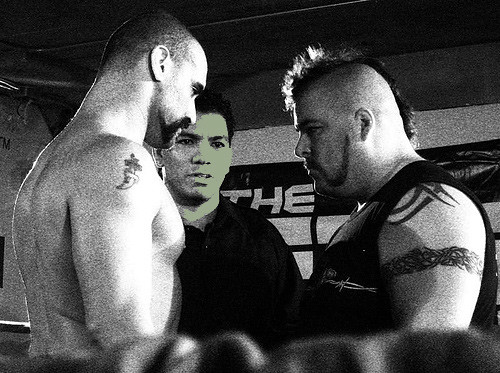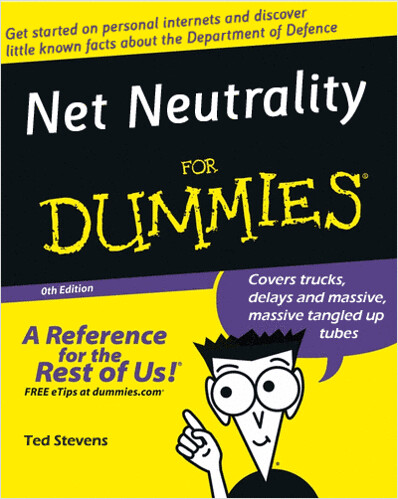Well, everyone else is talking about it. Why not me? Actually, that’s pretty much all it is until iOS 5 comes out this fall – talk. Apple has announced that they, too, have cloud aspirations for the future of computing. With iCloud they will forge ahead to where free services Hotmail and Gmail have been forever, and where $99 MobileMe has stumbled along.
We the Apple-people will have our mail stored on servers not in our abodes. Likewise our documents and even our music storage will be outsourced. You know what I mean, like Google Docs and and Windows Live (and Zoho) have been doing for a while now. Actually, more like DropBox. As my friend (and by friend I mean someone who writes stuff I read and whom I’ve never met nor with whom have I ever corresponded) Joshua Topolsky points out in his lovely opinion piece, Apple appears at this time to have missed something critical. The cloud is not about the cloud.
 The entire reason we entrust our music, photos, videos, documents, and data to off-site servers is so that we can use that stuff when we’re not at our primary base of operations. If I want to edit an Excel spreadsheet, I can pull it up anywhere – including your computer when I visit you – make the changes I want and they are there when I get to work, or on my phone on the train, or on my tablet at home. I don’t need a specific device. I routinely use this Microsoft product on my MacBook Pro. Now, I’m guessing that Apple’s iCloud will work seamlessly with my iPad 2 and my MacBook Pro. (I sold my iPhone 3GS.) But what about on my Droid Incredible or my Toshiba notebook? What about the Web? Not only do Google and Microsoft let me store my stuff, they let me use it on the web and across platforms. iWork.com is in beta and may eventually allow us to do more than view our stuff on the web, but as of today Apple is looking pretty web-phobic.
The entire reason we entrust our music, photos, videos, documents, and data to off-site servers is so that we can use that stuff when we’re not at our primary base of operations. If I want to edit an Excel spreadsheet, I can pull it up anywhere – including your computer when I visit you – make the changes I want and they are there when I get to work, or on my phone on the train, or on my tablet at home. I don’t need a specific device. I routinely use this Microsoft product on my MacBook Pro. Now, I’m guessing that Apple’s iCloud will work seamlessly with my iPad 2 and my MacBook Pro. (I sold my iPhone 3GS.) But what about on my Droid Incredible or my Toshiba notebook? What about the Web? Not only do Google and Microsoft let me store my stuff, they let me use it on the web and across platforms. iWork.com is in beta and may eventually allow us to do more than view our stuff on the web, but as of today Apple is looking pretty web-phobic.
One reason that this might be happening is that while Google is primarily an internet company and Microsoft a software company, Apple is a device designer. The reason they go around suing people who have app stores for calling them app stores (the nerve), is because device apps are at the heart of adding value to and driving customers toward Apple hardware. I don’t love my iPad 2’s appearance more than say the HTC Flyer. What I love is what I can do with that sucker. Web apps using HTML5 are going to move us away from being wed to a particular device in order to get the functionality we want. I’m guessing that if Apple sees any real threat to its future, it is not that someone else is going to make a better device. Apple may not have the latest, greatest device specs, but they are ninja designers who leave wannabe’s like Motorola looking pathetic with their SD card slots-to-nowhere among other Xoom features or RIMs Playbooks that have no standalone email client. The threat is that they will lose their monopolistic hold on us via apps. If I want to use FilterStorm Pro or GarageBand, I better have an iPad. Move those apps from being Apple-centric to the device agnostic web and I’ll have to think even harder before I buy an iPad 3. So, I totally see where Apple is coming from with their web-less iCloud.
I know a lot of folks disagree, but I like managing my media in iTunes. I like the idea of pushing the media out to my devices according to my iTunes decrees. But guess what? I pretty much do that with my music via Google Music and I get to listen from the web on pretty much any device I choose. Ironically, Google is tails to the same coin on which Apple finds itself heads. Google is wonderful on the web, but struggles with availability when I go offline.
So, I’m going to say something here you may never have expected to hear. I believe Windows Live beats both the Apple iCloud and Google Docs/Gmail in that Microsoft provides an ecosystem that supports both online and offline as well as virtually any device. Their web apps used to be slow and clunky but I find myself zipping through work at the speed of Google lately. Not as full powered as the desktop programs, the webapps are overall the best of the web. Couple that with 25GB of online storage and frankly MS has the lead by a couple of lengths.
 Of course, MS still lacks cloud music (unless you count Zune Pass) so everyone is playing catch up in some area. While the Google Music engineering is pretty sweet the UI is unremarkable. Uploading music to Amazon is a pain and their UI is equally plain. If Apple wanted to own this space, I’m sure that they could come up with a web app whose beauty would make us forget that Apple didn’t hit the web first.
Of course, MS still lacks cloud music (unless you count Zune Pass) so everyone is playing catch up in some area. While the Google Music engineering is pretty sweet the UI is unremarkable. Uploading music to Amazon is a pain and their UI is equally plain. If Apple wanted to own this space, I’m sure that they could come up with a web app whose beauty would make us forget that Apple didn’t hit the web first.
But today Apple appears to be content to use their apps to tether us to their devices. I love their hardware, but it isn’t everywhere I want to work, look at pictures, watch videos, check mail, or listen to my tunes. As cool as the iCloud appears to be, I wonder if it will go far enough to hold us in the Apple ecosystem.






 Photo courtesy of
Photo courtesy of 

